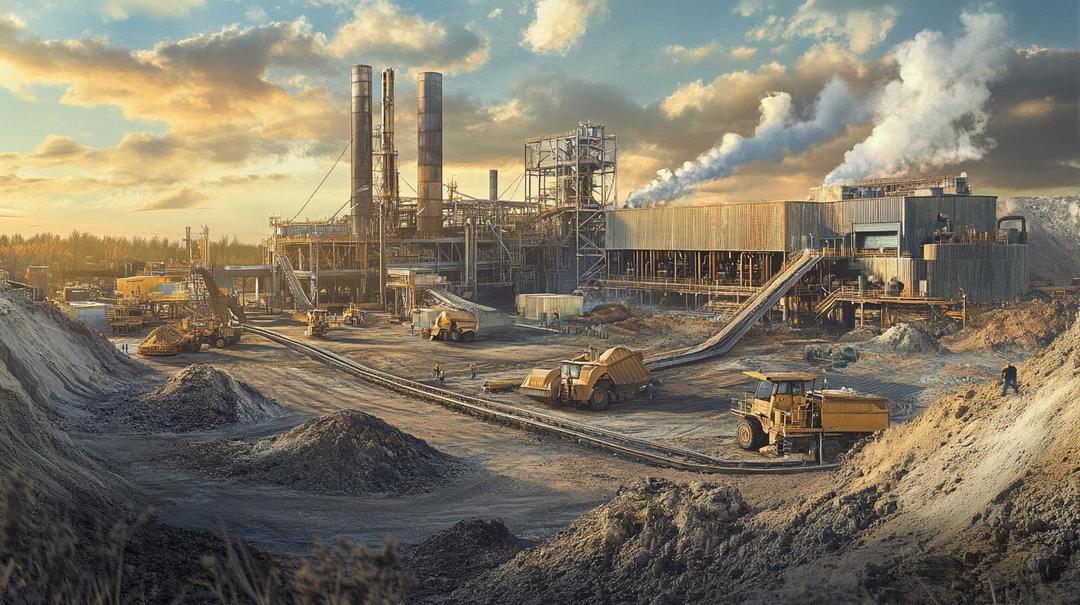The bigger issue? The dominance of a single country—China—over the global supply chain. The U.S. has been ramping up efforts to establish a more independent and secure rare earth distribution system, but challenges remain.
What's Inside
What Is the Future of Rare Earth Distribution in America?
The rare earth supply chain in America is at a critical turning point. Currently, the United States heavily depends on foreign sources, particularly China, for these critical minerals essential to advanced technologies. The landscape is rapidly changing, driven by strategic national interests and technological innovation.
Current Supply Chain Challenges
America’s rare earth dependencies create significant vulnerabilities in technology manufacturing and national security. Most electronics, renewable energy systems, and advanced military equipment rely on these minerals, yet domestic production remains limited. The country is working to restructure its approach, focusing on developing robust domestic mining and processing capabilities.
Key Geopolitical Factors
Geopolitical tensions, especially with China, are dramatically reshaping rare earth distribution strategies. Trade conflicts and supply chain disruptions have prompted the Biden administration to prioritize domestic rare earth production. Policy initiatives and federal investments are now aimed at reducing international dependencies and creating a more resilient mineral extraction ecosystem.
The Growing Push for Domestic Rare Earth Production
Recent legislation like the CHIPS and Science Act and the Inflation Reduction Act have provided significant momentum for domestic rare earth initiatives. States such as Texas, California, and Wyoming are emerging as potential new centers of rare earth mining and processing.
Investment and Development Landscape
Private sector investments are playing a crucial role in accelerating domestic rare earth production. Companies are navigating complex environmental and regulatory challenges to establish new mining projects. The economic potential and strategic importance of these minerals are attracting substantial capital and technological innovation.
Breaking China’s Supply Chain Dominance
China currently controls approximately 80% of global rare earth production and processing, a strategic advantage the United States is actively working to counteract. By establishing alternative supply chains with allies like Canada and Australia, America seeks to diversify its mineral sourcing.
Strategic Partnerships and Trade Dynamics
Trade tensions have prompted innovative approaches to rare earth distribution. Companies like MP Materials are becoming critical players in reshaping the U.S. rare earth sector, developing domestic processing capabilities and reducing reliance on international suppliers.
Technology and Innovation in Rare Earth Processing
Technological advancements are revolutionizing rare earth extraction and processing. Recycling techniques for electronic waste are providing new sources of these critical minerals. Artificial Intelligence and automation are making extraction more efficient and environmentally sustainable.
Emerging Processing Techniques
Innovative methods are being developed to make rare earth refining more cost-effective and environmentally friendly. These technologies aim to reduce the ecological footprint of mineral extraction while improving overall production efficiency.
Policy and Economic Impacts on Rare Earth Distribution
Federal policies are increasingly supporting domestic rare earth production through tax credits and strategic investments. The economic implications of reshoring rare earth supply chains are significant, potentially creating thousands of high-tech manufacturing and mining jobs.
Future Policy Directions
The potential for policy shifts with changing administrations adds complexity to long-term rare earth strategies. Continued federal support and consistent policy frameworks will be crucial for sustained growth in the domestic rare earth industry.
Investment Opportunities and Future Market Trends
The U.S. rare earth market is projected to experience substantial growth through 2030. Investors are closely watching companies demonstrating technological innovation and strategic positioning in the mineral extraction landscape.
Market Considerations
While opportunities are promising, rare earth investments carry inherent risks. Volatility in global markets, technological uncertainties, and regulatory challenges require careful strategic assessment. Venture capital continues to play a significant role in accelerating technological innovations in the sector.
Conclusion
The U.S. is at a pivotal moment in reshaping its rare earth distribution landscape. Challenges remain while progress is being made on multiple fronts—from domestic mining to innovative processing technologies. Whether through government policy, private-sector investment, or international partnerships, the next several years will determine America’s ability to build a sustainable and secure rare earth supply chain.
FAQs
Why are rare earth elements important to the U.S. economy?
Rare earth elements are crucial for producing consumer electronics, renewable energy technologies, military equipment, and more. A stable supply is essential for economic and national security.
What companies are leading rare earth production in the U.S.?
MP Materials, Lynas Rare Earths (via partnerships), and Energy Fuels are among the key companies working to establish a more robust U.S. rare earth supply chain.
Can the U.S. become self-sufficient in rare earth production?
While self-sufficiency is a long-term goal, complete independence is unlikely in the near future. However, diversification strategies with allied nations and technological advancements can reduce reliance on China.
How do environmental regulations impact rare earth mining in America?
Stringent environmental laws and permitting processes can delay or restrict new mining projects, making it challenging to quickly scale up domestic production.
What are the biggest risks facing the U.S. rare earth industry?
Dependence on China, environmental concerns, regulatory bottlenecks, and investment uncertainties pose significant risks to developing a robust rare earth supply chain.


Dustin
Driven by a fascination with rare earth elements and their role in powering modern tech and engineering marvels. A true car and tech enthusiast, he loves exploring how these hidden heroes fuel our most exciting innovations.
You Might Also Like…